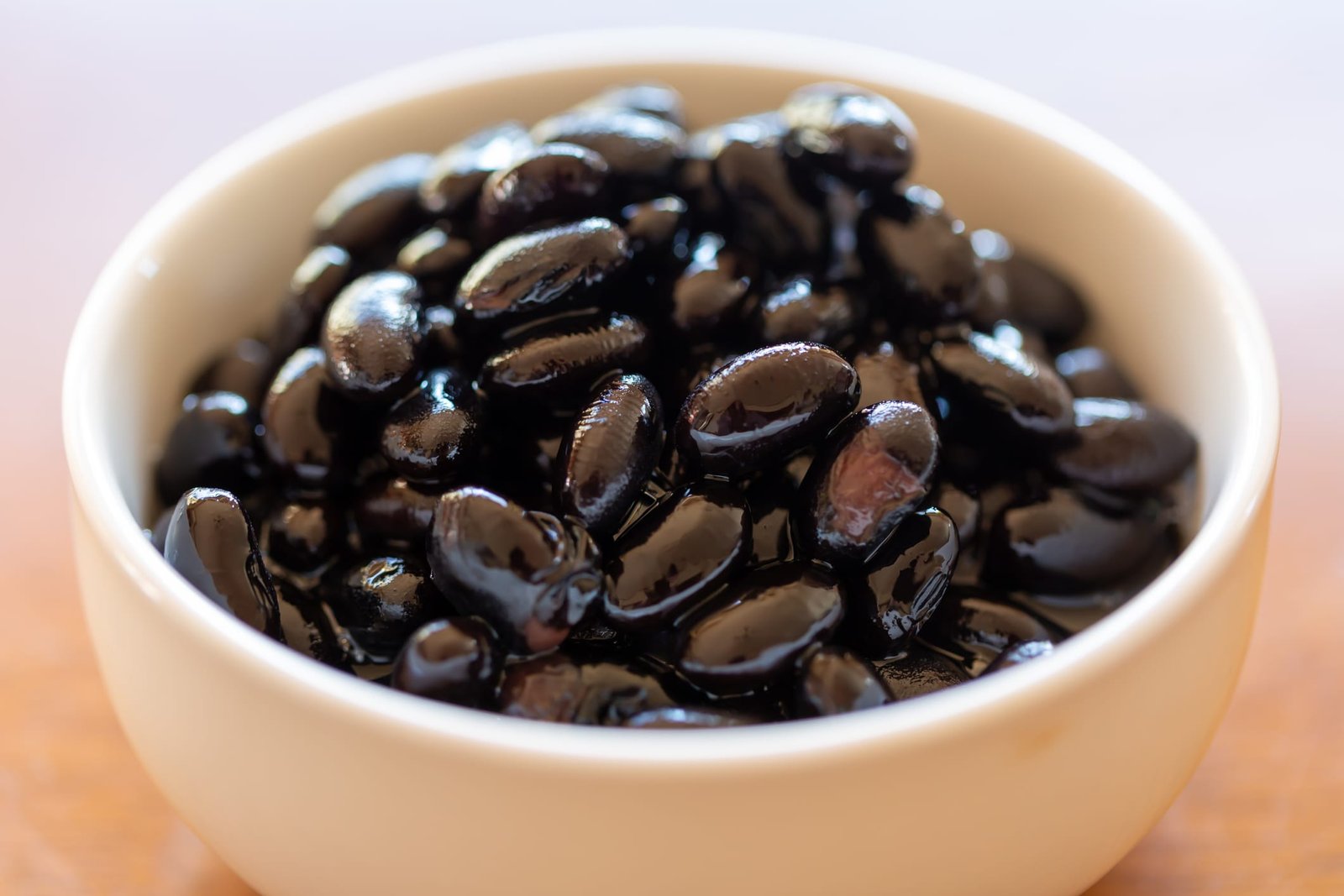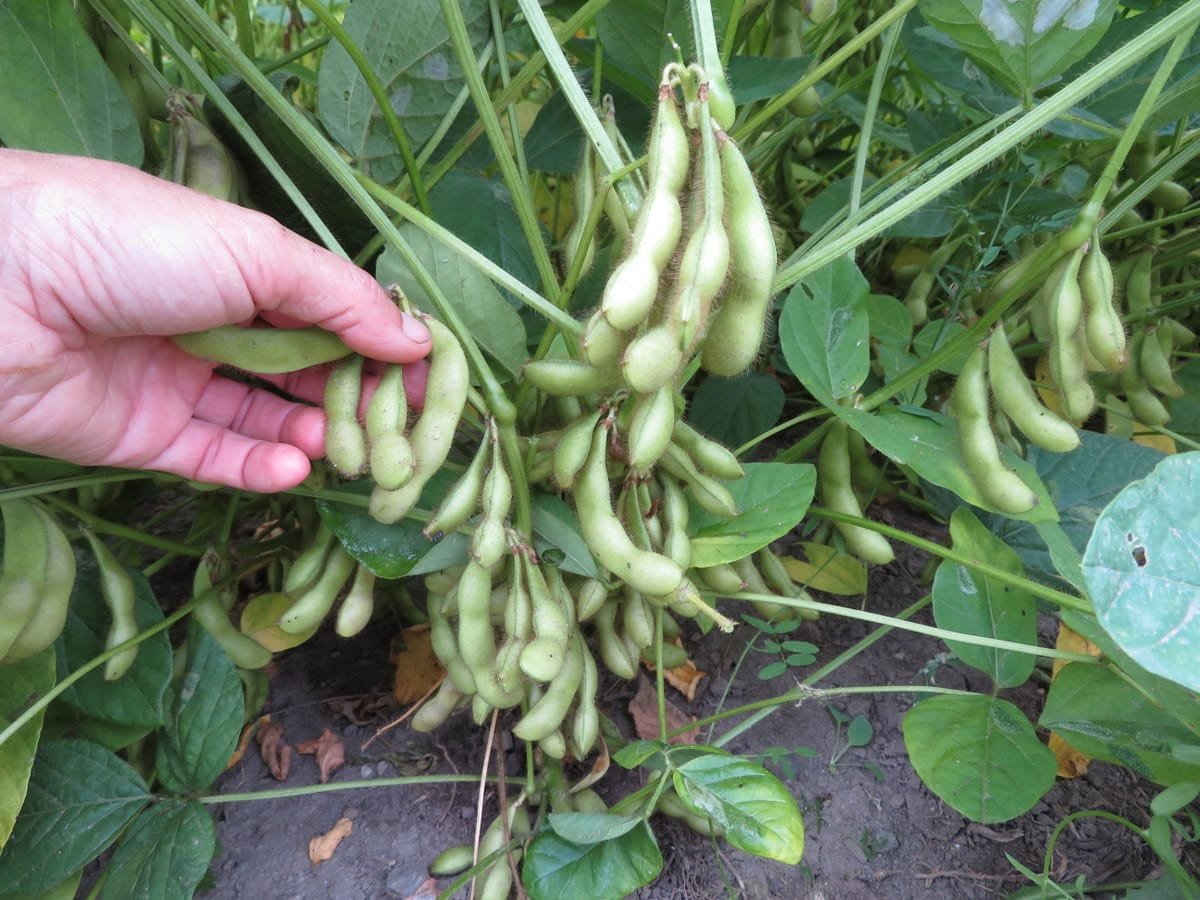
Summary of Contents
Introduction to Black Soybean
Black Soybean (Glycine max), known for its rich nutritional content and deep black hue, is a unique and versatile crop grown across several parts of the world, including Northeast India. While it is less common than its yellow counterpart, black soybean is prized for its high protein content, antioxidant properties, and medicinal uses. Its distinct taste and texture make it a popular ingredient in traditional dishes across Asia, and its potential health benefits have driven demand for this crop in both local and international markets.
In Northeast India, where sustainable and organic farming practices are becoming increasingly important, black soybean presents an excellent opportunity for farmers to grow a nutrient-dense crop that supports local livelihoods and contributes to regional economic growth.
Natural Habitat and Varieties
Black soybeans are a versatile crop that thrives in various climates and soil conditions. They are native to East Asia, particularly China and Korea, where they have been cultivated for centuries. In Northeast India, black soybeans are commonly grown in the plains and foothills, where the soil is fertile and well-drained. They are well-adapted to the region’s warm and humid climate, making them a suitable crop for sustainable agriculture.
Natural Habitat
Black soybean is well-suited to the temperate and subtropical climates found in parts of Assam, Manipur, and Meghalaya. It grows best in areas with well-drained soils and moderate rainfall, typically in hilly terrains and river valleys where the soil is rich in organic matter. These environmental factors contribute to the healthy growth of black soybeans, ensuring higher yields and better-quality produce.
Family and Genus
Black soybean belongs to the Fabaceae family and the Glycine genus, which includes various types of legumes. It shares many characteristics with the more common yellow soybean but differs in its dark skin, slightly sweet flavor, and higher antioxidant content.
Varieties of Black Soybean
There are several varieties of black soybeans, some of which are indigenous to Northeast India and others that are more commonly grown across Asia:
- Black Pearl: A high-yield variety known for its deep black color and high protein content, often used in traditional medicines and cooking.
- Kalo Dal: Grown primarily in India, this variety has a dense texture and is often used in dals and soups.
- Chikuma Kuro: A Japanese variety popular for its sweet taste and used primarily in tofu and miso production.

History and Tradition in Northeast India
Black soybean cultivation has deep roots in Northeast India, where indigenous communities have long used it as a staple food source. Historically, black soybeans were grown alongside rice and other legumes, making them a key part of crop rotation systems that helped maintain soil fertility. The high nutritional value of black soybeans also made them a critical part of local diets, particularly during lean seasons when other crops were less abundant.
While the exact origins of black soybeans are unclear, they are believed to have originated in East Asia and spread to other regions through trade and cultural exchange. Their introduction to Northeast India likely occurred during ancient or medieval times, as evidenced by their deep integration into local agricultural practices and cultural traditions.
Cultural Significance
In Northeast India, black soybean is more than just a crop—it holds cultural and medicinal significance. It is often used in traditional remedies to boost immunity, promote digestive health, and treat ailments like anemia and fatigue. Black soybean is also central to the preparation of several local dishes, including fermented soybean pastes and bean curds, which are widely consumed during festivals and family gatherings.
- Food Staple: Black soybeans have been a staple food source in Northeast India for centuries, providing essential nutrients and sustenance.
- Traditional Remedies: The beans are used in traditional medicine to boost immunity, promote digestive health, and treat ailments like anemia and fatigue.
- Cultural Identity: Black soybean cultivation and consumption have become an integral part of the region’s cultural identity, passed down through generations.
Health Benefits of Black Soybean
Black soybeans are known for their nutrient-dense profile and numerous health benefits. These legumes are packed with protein, fiber, and essential vitamins, making them a powerful addition to any diet.

Rich in Antioxidants
Black soybeans contain anthocyanins, the same powerful antioxidants found in blueberries and black rice, which help neutralize free radicals in the body. These antioxidants are believed to reduce the risk of heart disease, cancer, and inflammation.
- Anthocyanins: Black soybeans are packed with anthocyanins, powerful antioxidants that give them their dark color.
- Free Radical Protection: These antioxidants help neutralize harmful free radicals in the body, reducing the risk of chronic diseases like heart disease, cancer, and inflammation.
- Cellular Health: Antioxidants contribute to overall cellular health and can help protect against premature aging.
High Protein Content
With 36–40% protein, black soybeans are an excellent source of plant-based protein, making them ideal for vegetarians and vegans. They provide essential amino acids, which help build and repair tissues, support muscle health, and boost overall energy levels.
- Plant-Based Protein: Black soybeans are an excellent source of plant-based protein, providing essential amino acids for building and repairing tissues.
- Muscle Health: Consuming black soybeans can help support muscle health, energy levels, and athletic performance.
- Weight Management: The protein content in black soybeans can help promote satiety and reduce cravings, aiding in weight management.
Digestive Health and Fiber
Black soybeans are rich in dietary fiber, which aids in digestion and promotes a healthy gut microbiome. The fiber content helps regulate bowel movements and supports long-term digestive health.
- Dietary Fiber: Black soybeans are rich in dietary fiber, which promotes healthy digestion, prevents constipation, and supports a balanced gut microbiome.
- Gut Microbiome: A healthy gut microbiome is essential for overall health and well-being. Black soybeans can help nourish beneficial gut bacteria.
- Nutrient Absorption: Fiber can also help improve nutrient absorption, ensuring that your body gets the most out of the food you consume.
Cardiovascular Health
The combination of omega-3 fatty acids and magnesium in black soybeans helps maintain heart health by reducing bad cholesterol levels and lowering blood pressure. Regular consumption of black soybeans can also improve blood circulation.
- Omega-3 Fatty Acids: Black soybeans contain omega-3 fatty acids, which can help reduce bad cholesterol levels and improve heart health.
- Magnesium: Magnesium is essential for heart health and can help regulate blood pressure.
- Blood Circulation: Regular consumption of black soybeans can help improve blood circulation and reduce the risk of cardiovascular diseases
Diabetes Management
The low glycemic index (GI) of black soybeans makes them suitable for people with diabetes. The slow release of glucose into the bloodstream helps maintain stable blood sugar levels and reduces insulin spikes.
- Low Glycemic Index: Black soybeans have a low glycemic index, meaning they release glucose into the bloodstream slowly, helping to maintain stable blood sugar levels.
- .Insulin Resistance: Black soybeans can help improve insulin sensitivity, reducing the risk of developing type 2 diabetes.
- Blood Sugar Control: Incorporating black soybeans into your diet can help manage blood sugar levels, making them beneficial for individuals with diabetes.
Ideal Growing Conditions for Black Soybean
To successfully cultivate black soybeans, farmers must consider several factors, including climate, soil quality, and water availability.

Climate
- Temperate Climate: Black soybeans thrive in temperate climates with moderate rainfall and temperatures ranging from 18°C to 30°C.
- Kharif Season: In Northeast India, the crop is typically sown during the Kharif season (June-July), taking advantage of the monsoon rains.
Soil Conditions and Terrain
- Well-Drained Soil: Black soybeans prefer well-drained, loamy soils rich in organic matter.
- Soil pH: A slightly acidic to neutral pH (6.0-6.8) is ideal for optimal growth and nutrient uptake.
- Alluvial Soils: The alluvial soils found in the river valleys of Northeast India provide an excellent environment for black soybean cultivation.
Sunlight, Water, and Drainage
- Full Sunlight: Black soybeans require ample sunlight for photosynthesis and growth. At least 6-8 hours of direct sunlight per day is recommended.
- Adequate Irrigation: Regular irrigation is essential during the early stages of growth, especially in dry periods. However, proper drainage is crucial to prevent waterlogging.
- Drought Tolerance: Once established, black soybean plants are relatively drought-tolerant.
Season to Plant and Time Required to Grow
- Kharif Season Planting: The best time to plant black soybeans in Northeast India is during the Kharif season (June-July).
- Maturation Time: The crop typically matures within 90-110 days, making it a relatively short-duration crop.
Shelf Life
- Storage Conditions: When stored in cool, dry conditions, black soybean seeds can have a shelf life of up to one year.
- Proper Storage: Storing the seeds in airtight containers can help prevent moisture buildup and maintain their quality.
Best Organic Farming Techniques
As the demand for organic produce continues to rise, farmers in Northeast India are increasingly adopting sustainable and organic farming practices for black soybean cultivation. These methods prioritize environmental sustainability, human health, and animal welfare.
- Organic Fertilizers: Using compost, vermicompost, and green manure derived from organic waste helps enrich the soil with nutrients, improve soil structure, and enhance water retention.
- Biological Pest Control: Natural predators, beneficial insects, and organic pesticides like neem oil can be used to manage pests, reducing reliance on harmful chemicals.
- Companion Planting: Intercropping black soybeans with other crops can help attract beneficial insects and deter pests.
- Cereals: Rotating black soybeans with cereals like rice or wheat can help prevent pest and disease buildup and improve soil health.
- Maize and Millets: Intercropping black soybeans with maize or millets can enhance soil fertility and provide additional income.
By adopting organic farming practices, farmers in Northeast India can produce high-quality, organic black soybeans while contributing to a more sustainable and resilient agricultural system.
Economic Impact of Black Soybean
Black soybean farming presents both economic opportunities and challenges for farmers in Northeast India.

Market Dynamics
- Growing Global Demand: Black soybeans are increasingly sought after in global markets, particularly in countries like Japan, Korea, and the United States, for their health benefits and use in various food products.
- Rising Domestic Demand: In Northeast India, there is a growing awareness of the nutritional value of black soybeans, leading to increased domestic consumption.
- Market Gap: Despite the growing demand, there is still a market gap in terms of processing facilities, storage, and distribution infrastructure, limiting the full potential of black soybean exports.
Investment and Profitability
- Initial Investment: Cultivating black soybeans on 1 acre of land typically requires an initial investment of ₹20,000-₹30,000.
- High Return on Investment: Black soybean farming can be a profitable venture due to its relatively low input costs and high yield potential.
- Yield: A well-maintained black soybean farm can yield 800-1000 kg per acre, with market prices ranging from ₹40-₹60 per kg.
Employment Opportunities
- Job Creation: The black soybean industry provides employment opportunities for thousands of farmers, laborers, and workers in processing plants and distribution networks.
- Rural Livelihoods: The industry contributes significantly to the economic development of rural communities in Northeast India, offering a reliable source of income.
Local Demand and Export Market
- Infrastructure Challenges: Addressing challenges in processing, storage, and distribution infrastructure is crucial for maximizing export potential.
- Strong Local Demand: Black soybeans are a staple in Northeast Indian cuisine, ensuring a strong local market.
- Export Potential: The growing global demand for organic and non-GMO soybeans presents significant export opportunities for Northeast India.
Challenges in Growing Black Soybean
While black soybean farming is profitable, it comes with several challenges.
Pest and Disease Control
- Aphids and Leafhoppers: These insects can infest black soybean plants, sucking sap and causing damage to leaves and stems.
- Fungal Diseases: Diseases like soybean rust and root rot can affect the plants, leading to reduced yields and quality.
- Organic Pest Control: Organic farmers may face challenges in finding effective, natural solutions to combat pests and diseases without resorting to synthetic chemicals.
Climate Vulnerability
- Unpredictable Monsoon: The monsoon in Northeast India can be unpredictable, leading to either excessive rainfall or prolonged dry periods.
- Flooding and Drought: Both flooding and drought can negatively impact black soybean crops, affecting yield and quality.
- Climate Change: Climate change is increasing the frequency and intensity of extreme weather events, posing additional challenges to cultivation.
Market Access and Infrastructure
- Limited Market Access: Small-scale farmers in Northeast India may struggle to access larger markets due to a lack of infrastructure, transportation facilities, and information about market demand.
- Post-Harvest Losses: Inadequate storage facilities and transportation can contribute to post-harvest losses, reducing the overall value of the produce.
- Price Fluctuations: Fluctuations in market prices due to factors like oversupply or changes in consumer demand can impact the profitability of black soybean farming.
Addressing these challenges requires a multifaceted approach, including the development of effective pest and disease management strategies, investments in infrastructure, and support for small-scale farmers. By overcoming these obstacles, the black soybean industry in Northeast India can continue to thrive and contribute to the region’s economic development.
The Versatility of Black Soybeans
Black soybeans are a versatile and nutritious food that can be enjoyed in various forms, making them a valuable addition to any diet. Their culinary applications, therapeutic benefits, and potential for value-added products contribute to their growing popularity and economic significance.

Culinary Applications
- Fermented Black Soybean Paste: This versatile paste is used in various dishes, adding a unique flavor and texture to soups, stews, and curries.
- Soymilk and Tofu: Black soybeans are a primary ingredient in soymilk and tofu, popular plant-based alternatives to dairy products.
- Roasted Black Soybean Snacks: These crunchy snacks are high in protein and fiber, making them a healthy and satisfying option.
Therapeutic Uses
- Anti-inflammatory Properties: Black soybeans are believed to have anti-inflammatory properties, which can help reduce inflammation and pain.
- Kidney Health: They are also thought to support kidney health and function.
- Energy Boost: The high protein content in black soybeans can help boost energy levels and improve overall vitality.
Value-Added Products
- Black Soybean Flour: This gluten-free flour can be used in baking and cooking, adding a unique flavor and nutritional profile to various recipes.
- Soymilk: A popular plant-based milk alternative, soymilk made from black soybeans is rich in nutrients and suitable for vegans and those with lactose intolerance.
- Tofu: Black soybean tofu is a versatile ingredient that can be used in a variety of dishes, from stir-fries to desserts.
Conclusion
Black soybean farming in Northeast India offers a range of economic and health benefits. With increasing demand for organic, non-GMO crops, black soybean farming presents a lucrative opportunity for farmers while supporting sustainable agriculture. By overcoming challenges such as pest control and market access, farmers can unlock the full potential of this nutrient-rich crop and contribute to both local and international markets.
To learn more about other unique crops in Northeast India, check out our detailed guide on the Top 20 Crops in Northeast India and discover the region’s agricultural diversity.
FAQ Section
Q: Are black beans and black soybeans the same thing?
A: No, black beans are different from black soybeans. Black beans are legumes commonly used in Latin American cuisine, while black soybeans are a variety of soybean with a higher protein content and different nutritional properties.
Q: Is black soybean better than yellow soybean?
A: Black soybeans contain more antioxidants, specifically anthocyanins, compared to yellow soybeans. Both varieties are high in protein, but black soybeans are often considered better for heart health and overall wellness.
Q: Is black soybean farming profitable?
A: Yes, black soybean farming is profitable with yields of 8-10 quintals per acre and market prices ranging from ₹40-₹60 per kg, especially when grown organically.
Q: When is black soybean season?
A: Black soybeans are typically planted during the Kharif season (June–July) and harvested in October–November.
Q: How long does it take to grow black soybean?
A: Black soybeans take about 90 to 110 days to mature from planting to harvest.
Q: How much does a black soybean yield?
A: On average, black soybean yields range from 800 to 1000 kg per acre.
Q: What are the types of soybeans?
A: The three main types of soybeans are yellow soybean, black soybean, and green soybean (edamame).
Q: Which soybean variety is best?
A: The best variety depends on the intended use. For high antioxidant content, black soybeans are preferred, while yellow soybeans are widely used for oil and animal feed.
Q: What are black soybeans good for?
A: Black soybeans are excellent for heart health, digestion, weight management, and diabetes control, thanks to their high protein, fiber, and antioxidant content.
